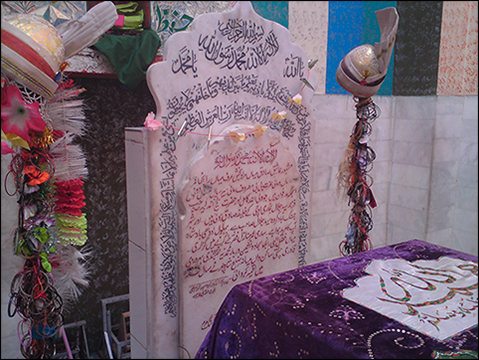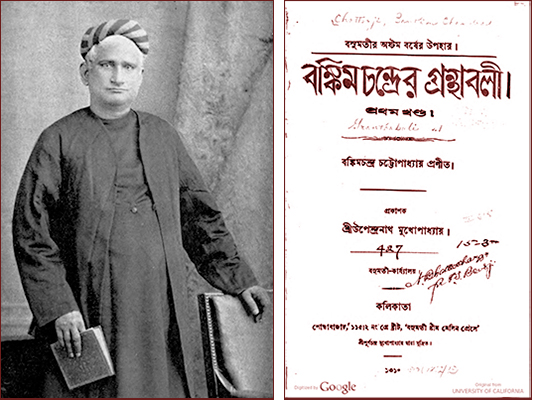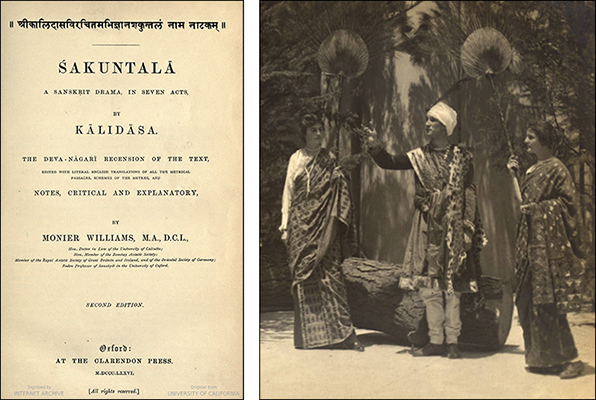Tag: BL Indo-European Indo-Aryan
Panjabi
The Languages of Berkeley: An Online Exhibition

Panjabi (also written Punjabi) is an Indo-Aryan language with about 125 million speakers in South Asia and beyond. With most Panjabi speakers living in the Pakistani province of Panjab and the neighboring Indian state of the same name, it also has a large diaspora of speakers all over South Asia and beyond, especially in Great Britain and Canada. Panjabi is written in the Arabic script in Pakistan and in the Gurmukhi script in India.
With beginnings in the 13th century, one striking feature of Panjabi literature is the large number of ballads of unrequited love. Of these, few have been as popular as the love story of Hir and Ranjha, often just referred to as Hir (pronounced as Heer), whose tragic love story was given poetic form by a number of poets through the centuries.
Dhaidu Ranjha was the youngest and handsomest of eight brothers and two sisters. He was the spoilt darling of his parents which made his older brothers jealous. On the death of the parents the brothers divided up the farmland among themselves giving Ranjha the worst fields. Matters were made worse by the hostility of Ranjha’s sisters-in-law, who were fed up with the young women of the village swooning over their good-for-nothing brother-in-law. During an argument over food one day they insulted and taunted him and dared him to marry Hir, the beautiful daughter of the powerful Sial clan, if he had such a high opinion of himself.
Ranjha left his house in a huff vowing never to return and traveled all day until he was dead tired. He came across a throne in a beautiful garden and stretched himself on it and went to sleep. He was soon awakened by an indignant but radiantly beautiful young woman and her pretty companions. This was none other than Hir who angrily wanted to know why this stranger was sleeping on her throne in her private garden. However, when a few words were exchanged it was love at first sight for both of them. Ranjha decided to become a herdsman of Hir’s family’s water buffaloes in order to stay near her.
Hir’s family soon found out about their secret meetings and decided to marry her off into the Khera family that belonged to another powerful clan of the region. Hir and Ranjha were devastated and Ranjha, having decided to renounce the world, went to the monastery of Bal Nath, a master of the Nath sect of yogis and became a disciple. He began wandering as a mendicant only one day to knock on the door of Hir’s in-laws. The lovers resumed their secret trysts only to be found out again. This time the scandal was even bigger and more dangerous as the honor of two powerful clans was involved. Nevertheless, Hir’s family reluctantly agreed to allow Hir and Ranjha to marry. However Kaido, Hir’s maternal uncle could not bear the dishonor brought to the family, and on the day of the wedding killed Hir by making her eat a poisoned confection. When Ranjha came to the house and saw what had happened he immediately ate the rest of the poisoned confection at last uniting with his beloved in death if not in life.
The earliest extant version of Hir was composed by the poet Damodar (1486-1568) in the early 16th century. Other versions were produced by various poets over the centuries yet few reached the fame and popularity of Waris Shah’s version which continues to be sung and enjoyed to this day.
Born in 1722 in the town of Jandiala Sher Khan in present-day Pakistan, Waris Shah (also spelled Vāris̲ Shāh and Warisa Shaha) became the disciple of Hafiz Ghulam Murtaza, a Qadiri-Chisti Sufi master from the city of Qasur. After completing his education, Waris Shah settled in the village of Malka Hans, where according to tradition in 1766 Waris Shah wrote his version of Hir after his own experience of unrequited love. The beautiful language and refined sentiments of Waris Shah’s Hir made it an instant success, especially among Sufi and other religious circles who saw it as an allegory of the mystical path of spiritual realization and the soul’s yearning for union with the divine. One interesting feature of Waris Shah’s Hir is a detailed and appreciative description of the spiritual traditions of the Nath yogis highlighting the ecumenical vision of Waris Shah and his belief in the universality of love and its spiritual grace. It was for this reason that during the Partition riots of 1947 when the famous contemporary poet Amrita Preetam left her hometown of Lahore on a train heading to Delhi, she composed a poem of lament addressed to Waris Shah asking him to look at his strife-torn Panjab and open another page of the book of love.
As for Hir and Ranjha, while historians may doubt their existence the tomb in which both are reputedly buried continues to be a destination for star-crossed lovers, Sufi and other spiritual aspirants, and all those drawn to the grace of love.
UC Berkeley has offered instruction in Panjabi since the 1980s where introductory and intermediate Panjabi is taught in the Department of South & Southeast Asian Studies. The current Panjabi instructor is Ms. Upkar Ubhi who has been teaching Panjabi on campus since 1998.
Contribution by Adnan Malik
Curator and Cataloger for the South Asia Collection
South/Southeast Asia Library
Title: Hir Ranjha
Title in English: The Adventures of Hir and Ranjha
Author: Vāris̲ Shāh, 1722–1798.
Imprint: n/a
Edition: n/a
Language: Panjabi
Language Family: Indo-European, Indo-Aryan
Source: Punjabi Kavita
URL: https://www.punjabi-kavita.com/Waris-Shah.php
Other online editions:
- The Adventures of Hir and Ranjha translated in to English by Charles Frederick Usborne, 1874 – 1919. (University of Heidelberg)
Select print editions at Berkeley:
- Hīra / Wārasashāha. Ammritasara: Bhāī Catara Siṅgha Jīwana Siṅgha, [19–]. In Panjabi (Gurmukhi script).
- Hīr Vāris̲ Shāh / Faqīr Muḥammad Faqīr; mushkil lafẓāṉ da tarjamah, Sult̤ān Khārvī. Lāhaur: Taḵẖlīqāt, 2012. In Panjabi (Arabic script).
The Languages of Berkeley is a dynamic online sequential exhibition celebrating the diversity of languages that have advanced research, teaching and learning at the University of California, Berkeley. It is made possible with support from the UC Berkeley Library and is co-sponsored by the Berkeley Language Center (BLC).
Follow The Languages of Berkeley!
Subscribe by email
Contact/Feedback
ucblib.link/languages
Bengali
The Languages of Berkeley: An Online Exhibition

Bankimacandra Cattopadhyaya (1838-1894) was not only the very first novelist of the Bengali language but is also considered one of its greatest. He wrote the first novel in Bengali as well as the first novel in English by an Indian. His works are still avidly read and a poem in his historical novel Anandamatha titled “Vande Matram” (“Hail Mother”) so inspired Indian freedom fighters it was officially adopted as India’s national song (not the same as the national anthem which is a poem by Tagore).
Bankim was born in a Brahim family, and grew up in the town of Midnapur where his father worked for the colonial government. After his education Bankim followed his father into civil service while at the same time pursuing a successful literary career. Starting with poetry he turned towards writing novels. His first published novel, Rajmohan’s Wife, was composed in English. However, he soon turned to Bengali and in 1865 published the very first novel in the language called, Durgesanandini (“Daughter of the Lord of the Fort”). He continued to write novels as well as satirical and humorous sketches. A commentary he wrote on the Gita was published posthumously.
Outside Bengal, his historical novel Anandamatha (“The Monastery of Bliss”), published in 1882, became the most famous and somewhat controversial for its attitude towards Muslims. It is set during the Fakir Rebellion of the late 18th century when Bengalis rose up against the oppressive rule of the East India Company during a famine. As mentioned above, it contains an ode to the motherland conceived as a goddess titled “Vande Matram” that became very popular with Indian freedom fighters during the struggle for independence. Bankim’s political stances got him in trouble with British authorities in his own lifetime, but in 1894—the same year he died—Queen Victoria made him a Companion of the Order of the Indian Empire.
Bankim belonged to a generation of Bengalis who had grown up under British rule and were able to reflect on the massive changes that rule had brought. The generation immediately before his had been the first to be exposed to western and modern ideas, and many of them accepted them with enthusiasm while others did so reluctantly. While Bankim did not question the adoption of western and modern ideas and technologies, he and members of his generation were more familiar with them and were in a position to critically judge the promises the British had made to Indians about the benefits of European rule and civilization. At the same time they had gained the confidence to appreciate aspects of their Indian and Hindu heritage which they wanted to hold onto as they modernized. Apart from their literary merits, these are some of the themes that make Bankim’s works relevant to this day.
Bengali, or Bangla to its nearly 230 million speakers, is an Indo-Aryan language belonging to the Indo-European family of languages. It is the official and predominant language of Bangladesh and the Indian state of West Bengal, and also has many speakers in the neighboring Indian states of Tripura and Assam. With a rich and centuries old literary tradition it continues to be a major language of modern South Asia. At UC Berkeley, introductory and intermediate Bengali is taught through the Department of South & Southeast Asian Studies.
Contribution by Adnan Malik
Curator and Cataloger for the South Asia Collection
South/Southeast Asia Library
Title: Granthabali
Title in English: Collected Works
Authors: Caṭṭopādhyāẏa, Baṅkimacandra, 1838-1894.
Imprint: Kalikata : Upendra Nath Mukhopadhyaya, Basu Mati Office, 1310-11 [1892/93-93/94].
Edition: 1st
Language: Bengali
Language Family: Indo-European, Indo-Aryan
Source: HathiTrust Digital Library (UC Berkeley)
URL: https://catalog.hathitrust.org/Record/100787603
Other online editions:
- Bankim Rachanabali (volume 1 of complete works in Bengali), Internet Archive (Digital Library of India)
- The Abbey Of Bliss (English translation of Anandamath), Internet Archive (British Library)
Select print editions at Berkeley:
- Granthabali. Kalikata : Upendra Nath Mukhopadhyaya, Basu Mati Office, 1310-11 [1892/93-93/94].
The Languages of Berkeley is a dynamic online sequential exhibition celebrating the diversity of languages that have advanced research, teaching and learning at the University of California, Berkeley. It is made possible with support from the UC Berkeley Library and is co-sponsored by the Berkeley Language Center (BLC).
Follow The Languages of Berkeley!
Subscribe by email
ucblib.link/languages
Sanskrit
The Languages of Berkeley: An Online Exhibition

There is little doubt that Kālidāsa is one of the most celebrated poets not only in Sanskrit literature but in all of South Asian history. His works represent the acme of Sanskrit poetry and became the model for subsequent poets in Sanskrit as well as most of the major languages of the region. Despite his celebrity and the reverence for his works, very little is definitively known about Kālidāsa. Based on tradition and meagre references to his own life in his works, most scholars agree that he lived in early 5th century CE in the city of Ujjain, located roughly at the center of the Indian peninsula.
Abhijnanasakuntala (The Recognition of Shakuntala), is based on an episode taken from the great Indian epic, the Mahabharata. Kālidāsa retains the basic plot line of the episode but alters it in key ways to adapt it to the stage and make it more romantic. The story revolves around a beautiful maiden named Shakuntala who is the daughter of an ascetic sage and a heavenly nymph. Abandoned by her parents, she was raised in the hermitage of another sage who found her in the care of a flock of “shakunta” birds. Hence, he named her Shakuntala, i.e., protected by shakunta birds. One day, she falls in love with a visiting king named Dushyant who gives her a ring as the token of their love and promises to return to take her with him. In his absence Shakuntala gives birth to a son. Due to a curse, he forgets about her and only recalls her when he encounters the ring again after many years. Their son, Bharata, goes on to become the first emperor of India whose descendants are the protagonists of the Mahabharata.
Of all his works, Kālidāsa’s Abhijnanasakuntala became the most world-renowned after it was translated into English by Sir William Jones in Calcutta in 1789. Translations in German and French appeared subsequently. The play was to be translated into all these languages, and many more, numerous times by prominent linguists and indologists of the 19th and 20th centuries. Among these is the translation featured here by the famous indologist Sir Monier Monier-Williams.
Scholarly interest in Sanskrit in European and American academia is not only due to the language’s own rich literary tradition but also because it is the sacred language of the Hindu, Buddhist and Jain religious traditions. Even though the Buddhist and Jain traditions initially used other languages they eventually switched to Sanskrit, as it was the language of high culture, philosophy, and scholarly discourse in ancient India. The linguistic influence of Sanskrit on local South Asian languages is comparable to Latin and ancient Greek in Europe.
Vedic Sanskrit, an ancient form of Sanskrit in which the Vedas, the most ancient Hindu scriptures, are composed, is an important source for the study of the evolution of Indo-European languages. In fact, having been orally composed between 1500 and 1200 BCE, the Vedas are among the oldest literary creations in any Indo-European language.
The study and teaching of Sanskrit at UC Berkeley goes back to the 1890s and includes an impressive list of world renowned scholars and interest in Kālidāsa has also been keenly pursued here. Among others, Professor Arthur W. Ryder, Professor of Sanskrit, published a translation of a selection of Kālidāsa’s works in 1912 that included Abhijñānaśākuntala. This translation became the basis for a performance of the play in the Greek Theater in 1914. The play continues to be widely performed into the present day. Today, Professor Robert P. Goldman is UC Berkeley’s Magistretti Distinguished Professor of Sanskrit. He is also the director, general editor, and principal translator of the recently published multi-volume critical edition of a fully annotated English translation of Valmiki’s famous epic, Ramayana, and has received many awards and fellowships.
Contribution by Adnan Malik
Curator and Cataloger for the South Asia Collection
South/Southeast Asia Library
Special thanks to Sally Sutherland Goldman, Senior Lecturer in Sanskrit
Department of South and Southeast Asian Studies
Title: Śakuntalā, a Sanskrit drama, in seven acts. The Deva-Nāgari recension of the text, ed. with literal English translations of all the metrical passages, schemes of the metres and notes, critical and explanatory by Monier Williams.
Authors: Kālidāsa
Imprint: Oxford : Clarendon Press, 1876.
Edition: 2nd
Language: Sanskrit
Language Family: Indo-European, Indo-Aryan
Source: HathiTrust Digital Library (UC Berkeley)
URL: https://catalog.hathitrust.org/Record/002751897
Other online editions:
- Translations of Shakuntala and Other Works by Kālidāsa (Internet Archive)
- Monier-Williams translation and Sanskrit text (2nd ed.) (Internet Archive)
Select print editions at Berkeley:
- Śakuntalā, a Sanskrit drama, in seven acts. The Deva-Nāgari recension of the text, ed. Oxford : Clarendon Press, 1876.
The Languages of Berkeley is a dynamic online sequential exhibition celebrating the diversity of languages that have advanced research, teaching and learning at the University of California, Berkeley. It is made possible with support from the UC Berkeley Library and is co-sponsored by the Berkeley Language Center (BLC).
Follow The Languages of Berkeley!
Subscribe by email
Contact/Feedback
ucblib.link/languages
![The Languages of Berkeley [fan]](https://update.lib.berkeley.edu/wp-content/uploads/2019/02/fan_languages-450px.jpg)